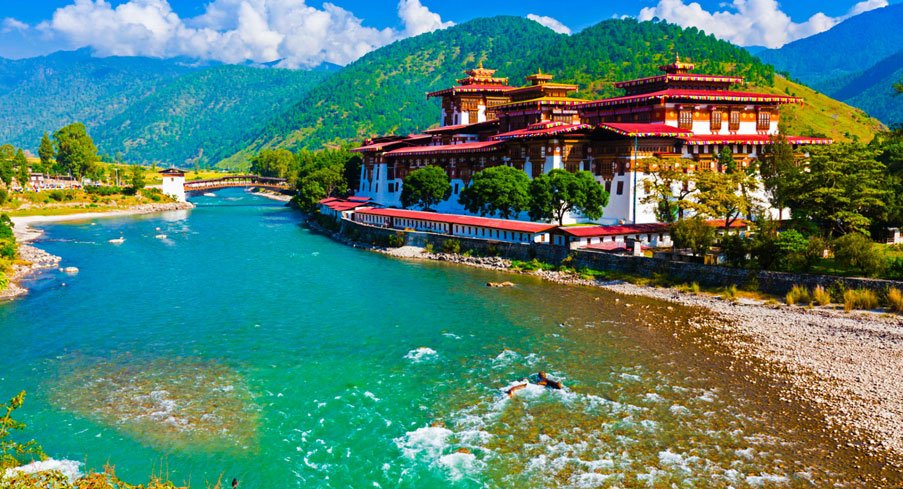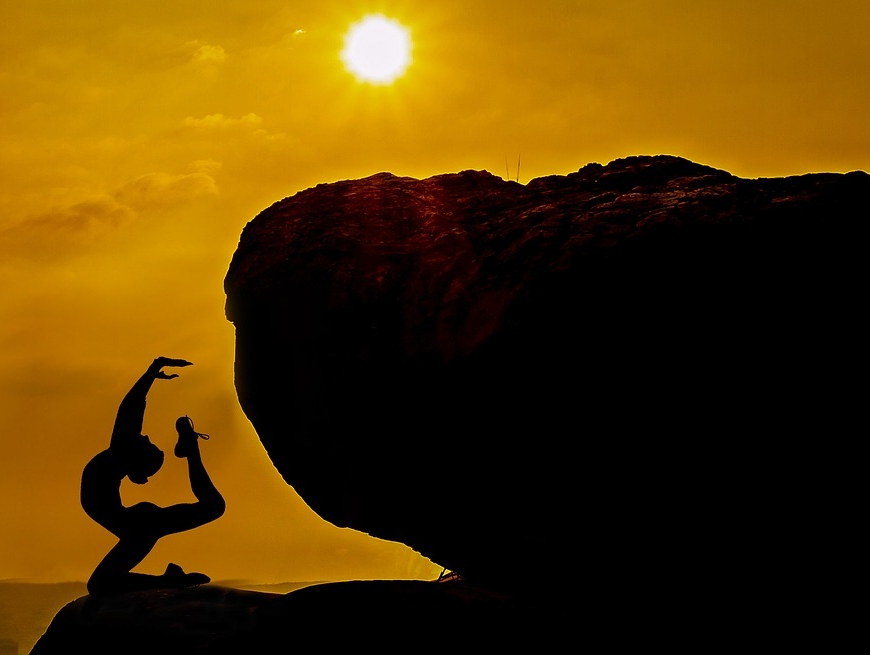As prophesied, the second largest Dzong of Bhutan was built on top of an elephant like hill by the destined Ngawang Namgyal, the first Zhabdrung. In the monastic winter seat of Bhutan still reigns the Architectural legacy of the Punakha Dzong. Situated strategically at the confluence of the Father and Mother rivers, The Pho Chhu and the Mo chhu, which converge and amalgamate in the beautiful valley of Punakha, the alpine landscape of which is a picturesque of peace and serenity.
The Bridge
To reach the Dzong you will have to cross the longest suspension bridge in Bhutan. Spanning 55 meters in length, The Bazam bridge was rebuilt traditionally using wood in 2008, as the prior modernised bridge was built untraditionally using steel chains, as an outcome of floods.
With prayer flags fluttering beside you in the cold mountain breeze, the bridge offers a mesmerising view of the natural beauty to the beholder. As a symbol of friendship, it connects the people from the valley to the dzong.
The Great Dzong – Significance
When visiting Bhutan, the country which pioneered the concept of Gross National Happiness, the Punakha Dzong should be on the top of your list, among the many other things to see there. Also known as Pungtang Dewaichenpai Phodrang, which means the great place of happiness, it is often considered the most beautiful Dzong in the country and is also the most important Dzong in Bhutanese history. This Majestic Structure is the second oldest and second largest Dzong in all of Bhutan.
The auspicious fortress served as the central location for the Govt. of Bhutan till 1955 and still remains the District Administrative Centre housing a several religious relics. Most of the eminent ceremonies and coronations are conducted here. It was also the destination for the Royal Wedding in 2011 and most of Bhutan’s national treasures are kept inside this Dzong. Location of the fortress makes it an important part of the Bhutanese culture. Standing as an emblem of a Unity, every detail of the Dzong reflects the rich culture and religion of Bhutan.
Honest Design
True to its culture, the Dzong is built using austere traditional design techniques and principals. In proximity, one can witness the precise and diligent Bhutanese Craftsmanship. Built in 1637-38, it took only about a year to complete, but by far the most impressive thing about this Dzong is that it was built without the use of nails, not even one.
In times of war these monasteries served as a fortress. In evidence stands the 15-meter- high surrounding wall ascended by the steep wooden staircase and a heavy wooden door, which awaits guarding the entrance. Unlike other dzongs, the 180-meter-long and 72-meter-wide complex, uniquely features three Docheys (courtyards) and a six-story high Utse (tower) blazing in gilded woodwork. The first courtyard locates the Administrative offices, a magnificent white-washed stupa and the Bodhi tree which believed to have grown from the cutting of the first bodhi tree. A chapel dedicated to the queen of nagas also stands in the far-left corner. The residential quarters of monks and two historic halls are housed in the second courtyard. And in the southern most end of the dzong, stands the third courtyard with the Machey Lakhang with a casket containing the embalmed body of the founder, Namgyal and several more.
Reflection of Culture
Painted in rich colours of Buddhism, white, red, golden and others, the dzong is an architectural masterpiece. From the threshold of the gilded timber doorframe, the colourful depiction of the bhavchakra, the Buddhist wheel of life is visible. Further, on entering, you can explore inside the three courtyards extensively. The view of the one-hundred pillar hall featuring columns painted brightly, depicting dragons, horses and demons, exquisite murals, the beautifully carved woodwork and colourful paintings inside the Dzong are a feast for the eyes. The ornamentation on the utzes, the regally detailed and painted timber windows which enlarge and protrude successively with the rise in each storey, embellished with elaborate wooden carving in the balconies of the fifth storey, emerging as a contiguous gallery, with little training monks in red, peaking mysteriously, will leave you intrigued and awestruck. Nestled in the magnificent Himalayas, it is a beautiful place, a pious abode in nature.
For a visual narrative of this beautiful place you can checkout this video link below from 3:21 min to 6:50 min.
-Aarushi





Add Comment